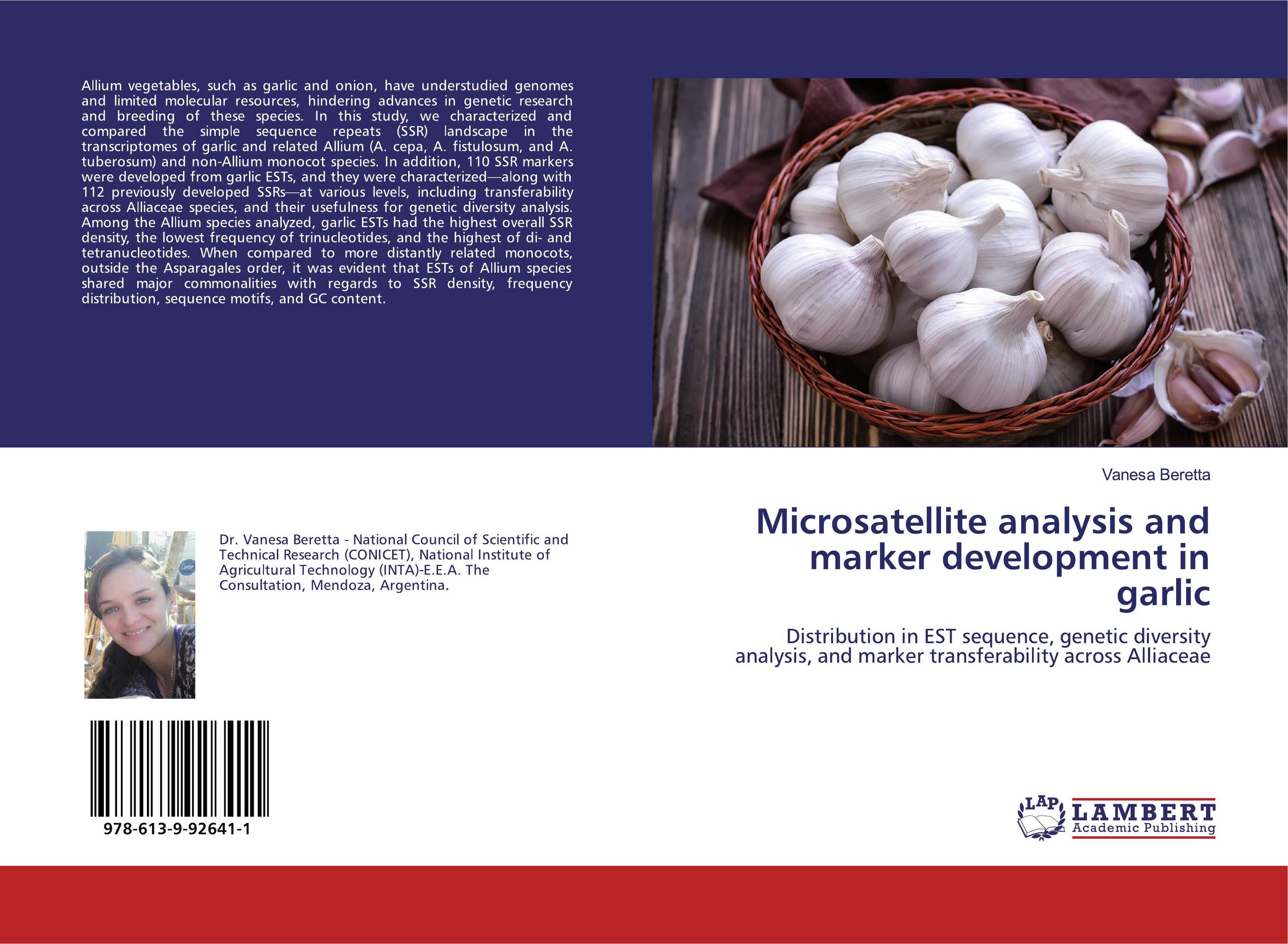| Поиск по каталогу |
|
(строгое соответствие)
|
- Профессиональная
- Научно-популярная
- Художественная
- Публицистика
- Детская
- Искусство
- Хобби, семья, дом
- Спорт
- Путеводители
- Блокноты, тетради, открытки
Microsatellite analysis and marker development in garlic. Distribution in EST sequence, genetic diversity analysis, and marker transferability across Alliaceae

В наличии
| Местонахождение: Алматы | Состояние экземпляра: новый |

Бумажная
версия
версия
Автор: Vanesa Beretta
ISBN: 9786139926411
Год издания: 2019
Формат книги: 60×90/16 (145×215 мм)
Количество страниц: 64
Издательство: LAP LAMBERT Academic Publishing
Цена: 25124 тг
Положить в корзину
Позиции в рубрикаторе
Отрасли экономики:Код товара: 505163
| Способы доставки в город Алматы * комплектация (срок до отгрузки) не более 2 рабочих дней |
| Самовывоз из города Алматы (пункты самовывоза партнёра CDEK) |
| Курьерская доставка CDEK из города Москва |
| Доставка Почтой России из города Москва |
Аннотация: Allium vegetables, such as garlic and onion, have understudied genomes and limited molecular resources, hindering advances in genetic research and breeding of these species. In this study, we characterized and compared the simple sequence repeats (SSR) landscape in the transcriptomes of garlic and related Allium (A. cepa, A. fistulosum, and A. tuberosum) and non-Allium monocot species. In addition, 110 SSR markers were developed from garlic ESTs, and they were characterized—along with 112 previously developed SSRs—at various levels, including transferability across Alliaceae species, and their usefulness for genetic diversity analysis. Among the Allium species analyzed, garlic ESTs had the highest overall SSR density, the lowest frequency of trinucleotides, and the highest of di- and tetranucleotides. When compared to more distantly related monocots, outside the Asparagales order, it was evident that ESTs of Allium species shared major commonalities with regards to SSR density, frequency distribution, sequence motifs, and GC content.
Ключевые слова: onion, garlic, Functional compounds, beneficial properties, Breeding



